The Andes is the longest mountain range in the world and boasts some of the highest peaks. Glaciers, below-cero temperatures, extreme winds, huge waves, and hours and hours of walking were some of the challenges that these two Argentinean friends faced during their 50 days journey.
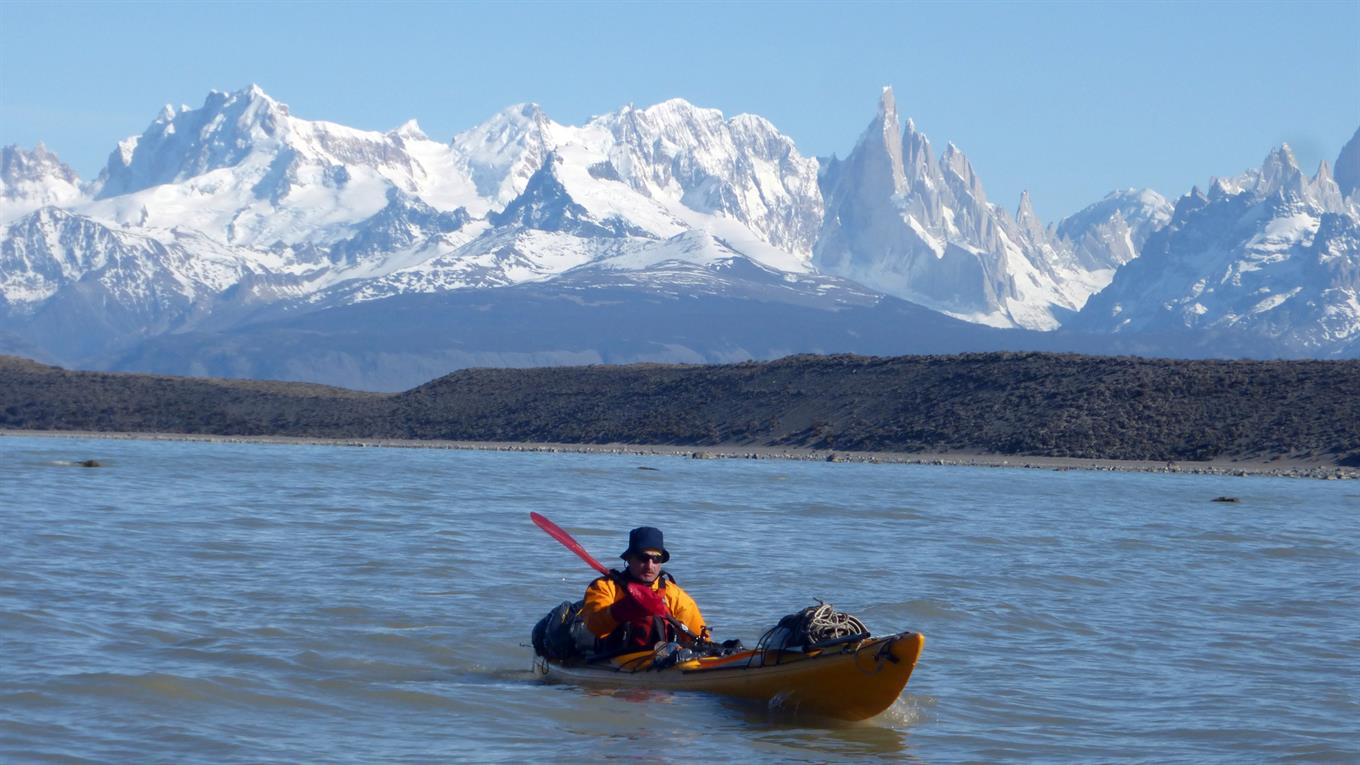
Leonardo Proverbio had this idea on his mind for more than 20 years. He wanted to cross the Southern Ice Field in kayak. A friend of his watched something similar in a Spanish TV show, and they both finally decided to accomplish their dream. They tried it once, but inexperience forced them give up before they had completed less than 10% of their trip. Now, after several years with this idea whirling in their minds, they returned to finish what they had once started.
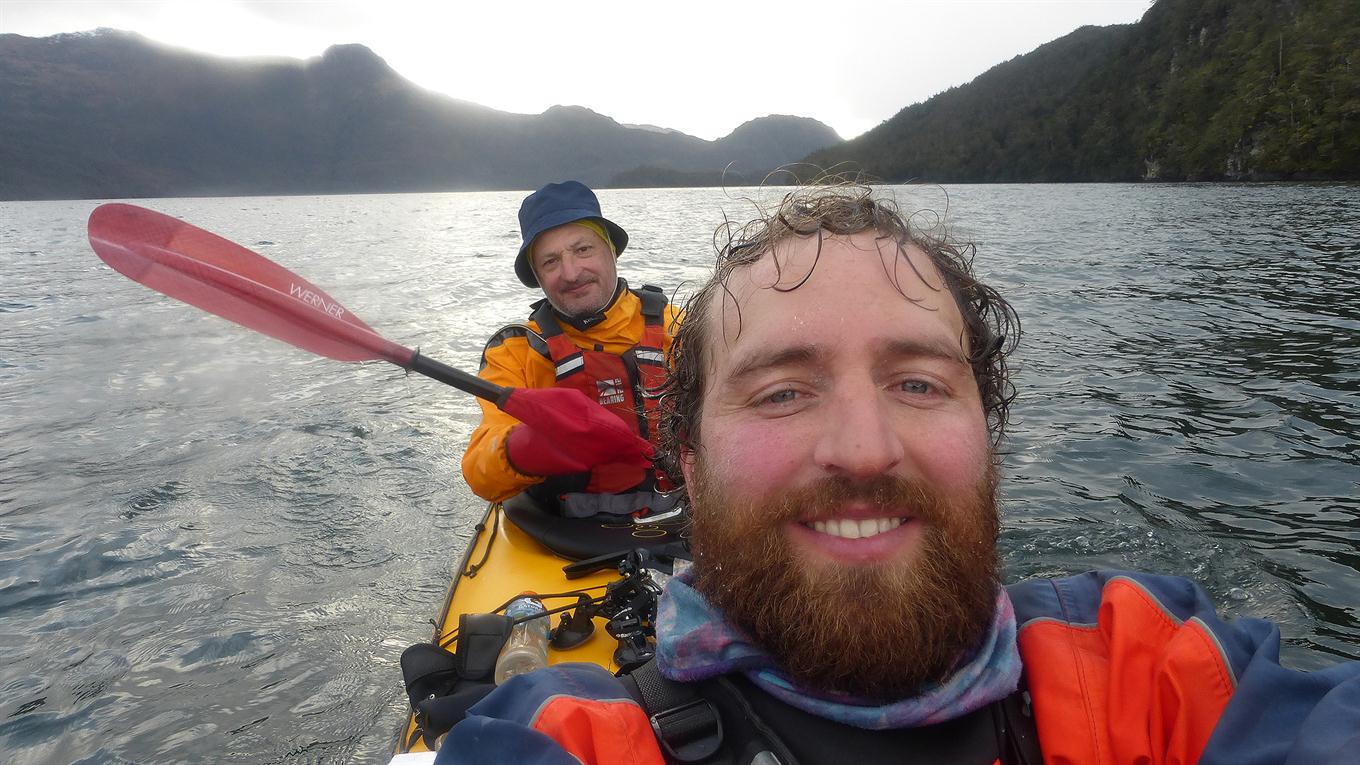
The crossing of the Andes, from the Pacific to the Atlantic Ocean, through the Patagonian Ice Field is not an easy journey. That is why Leonardo is so exultant when it comes to telling the experience that lived along with Roberto Trinchero, a kayak master, doctor in Physics and professor of the Balseiro Institute, who met several decades ago in one of their usual adventures in Bariloche, in the Shelter Frey, where Leonardo practiced climbing.
To the naked eye, the are literally water and oil. Leonardo, who is 36 years old, has experienced incredible adventures in the mountains and the ice. He even skied and kite surfed in Antartica. On the other side, Roberto, who is 60 years old, is the most experienced in kayaking but also a calm, walker man. When Leonardo asked him to come, he didn’t doubt for a second.
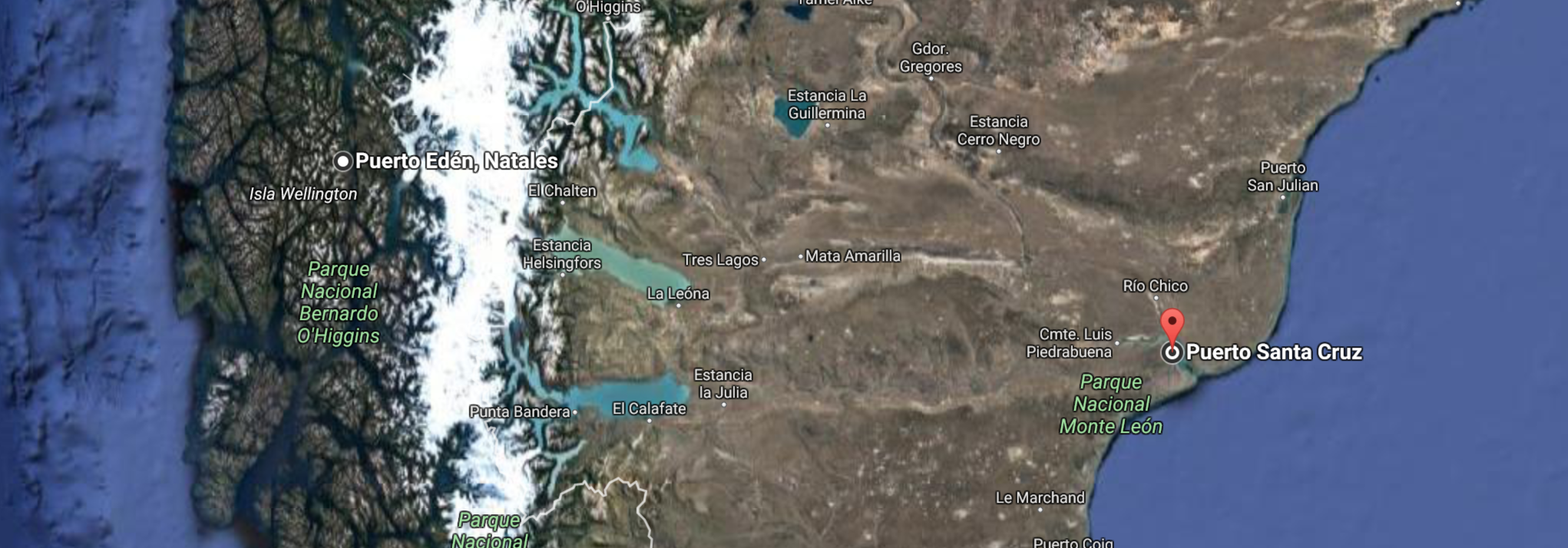
“The idea was to go from salt water to salt water through the Andes but in kayak.” they said a few days after the trip. What was the key to completing it? “Luck and patience, almost everything is linked to the climate, we were there 50 days but 10 were standing in the middle of the crossing due to climatic issues,” insisted Roberto.
The adventure was 750 kilometers in total, 7,000 meters of vertical distance and the highest point they touched was 1,750 meters above sea level. In total they walked -carrying the kayak- about 200 kilometers. The rest went pure paddle.
THE JOURNEY
September 12th was the starting date of the crossing. But, before that date, the couple had spent two months practicing with their kayak (which in fact wasn’t their’s. It belonged to a friend of theirs who had lend it to them) in the lakes and rivers near Bariloche, where they both reside.
The kayak weighted 120kg: food, camping, glacier equipment, skis, shovel, saw to cut the ice, and so many things that added weight.
The starting point was Puerto Edén, in the Bernardo O’Higgins National Park in southern Chile, where they began paddling in the Pacific to reach the ice field glacier. It was 120 kilometers of paddling in salt water and at times with waves of up to 2 meters that forced them to stop the march for two days until the wind, the worst enemy of the crossing, died down.
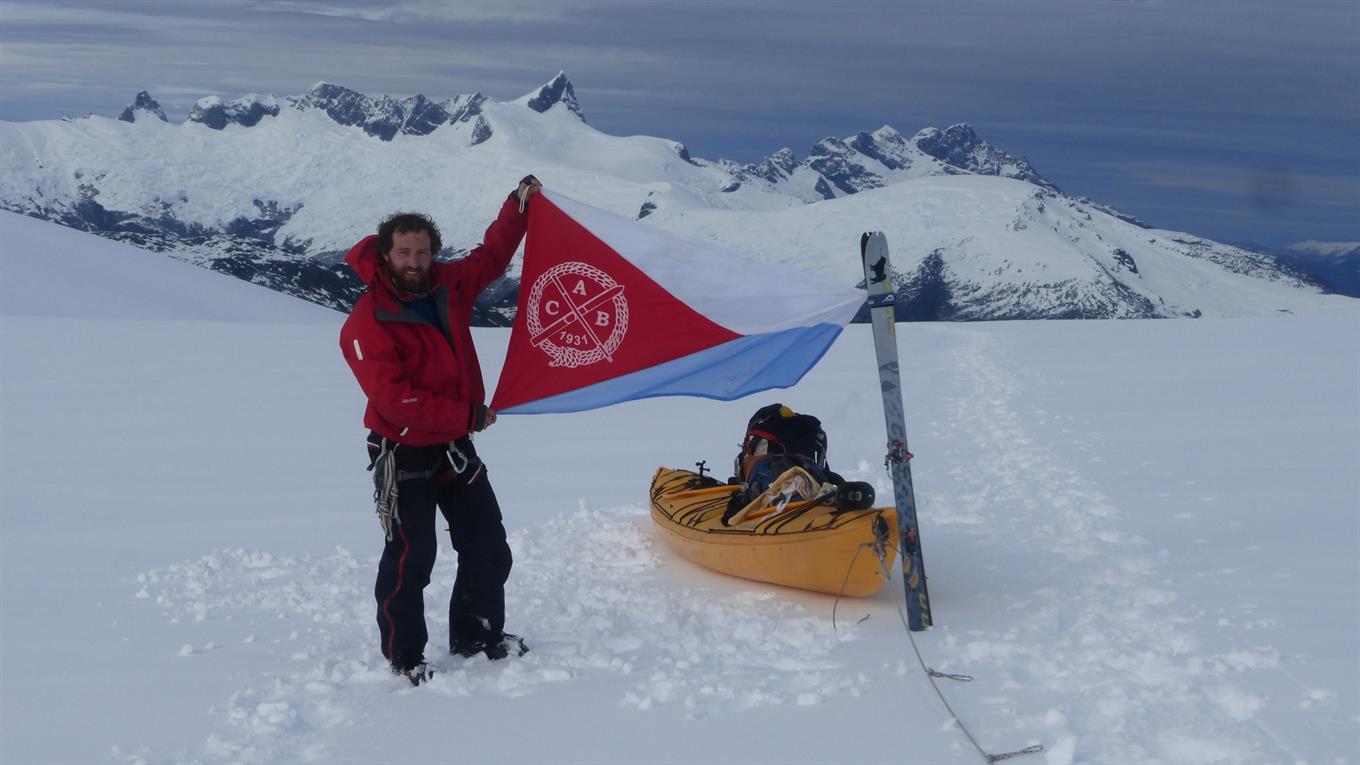
“We passed by the Pío XI Glacier which filled us with motivation and hope as we saw the glacier zone. It is an area of icebergs and low depth, without any difficulties we pass inside the Exmouth fjord arriving late, tired and cold to build the camp but at 1am the tide went up so we had to dismantle the tent and place it in the forest, a little further in”, Leonardo recalled.
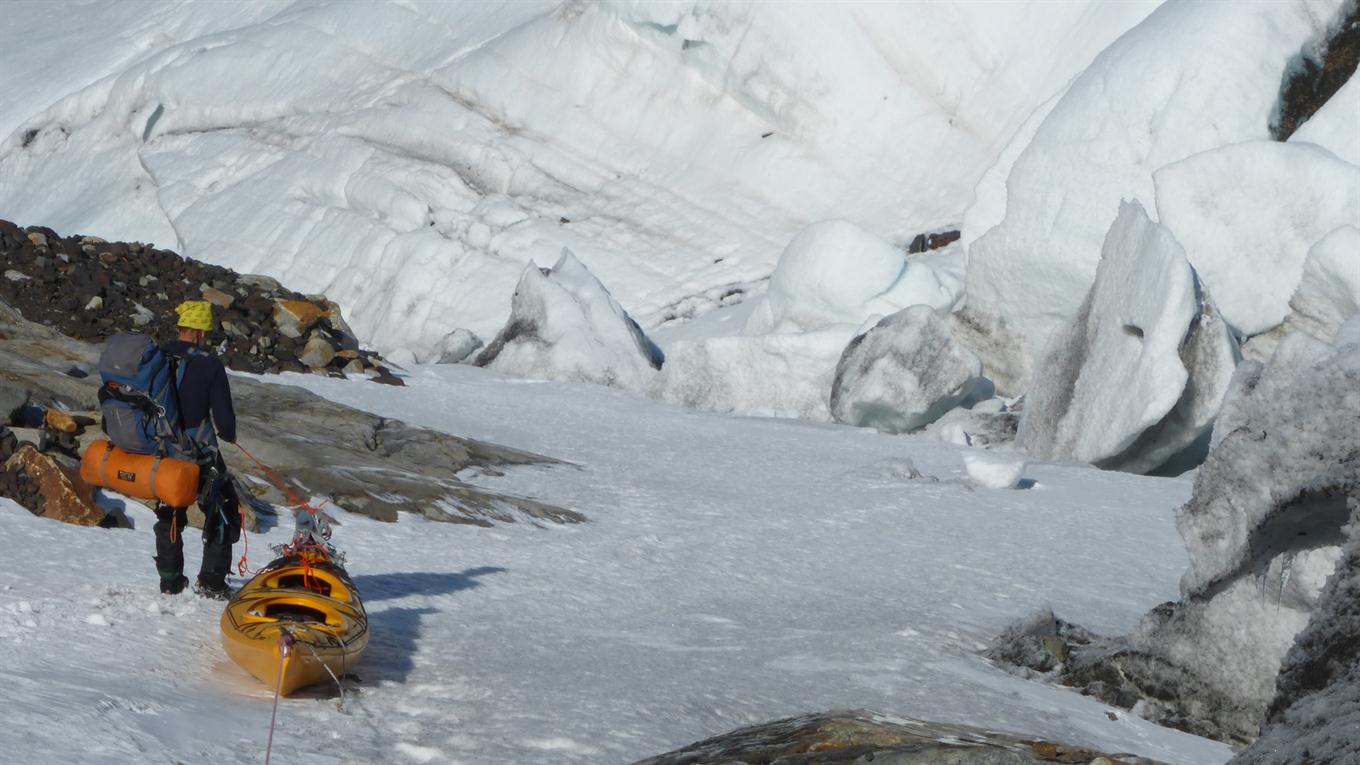
From this point the adventurers ventured up the ice field to find the route by which they were going to carry the kayak. The first experience was bad. When descending from the steep 1,300 meters that they climbed until seeing the ice plain, they became disoriented and lost the way to arrive at the camp site.
“It was disheartening, we had to sleep in the open field, with cold, we put vegetation inside our clothes to warm us and we lit a fire because the only thing we had was a lighter, everything was in the camp,” said Roberto with a Smile that tears his eyes as he remembers that day.
The next morning they found the camp, which was only 600 meters away from them.
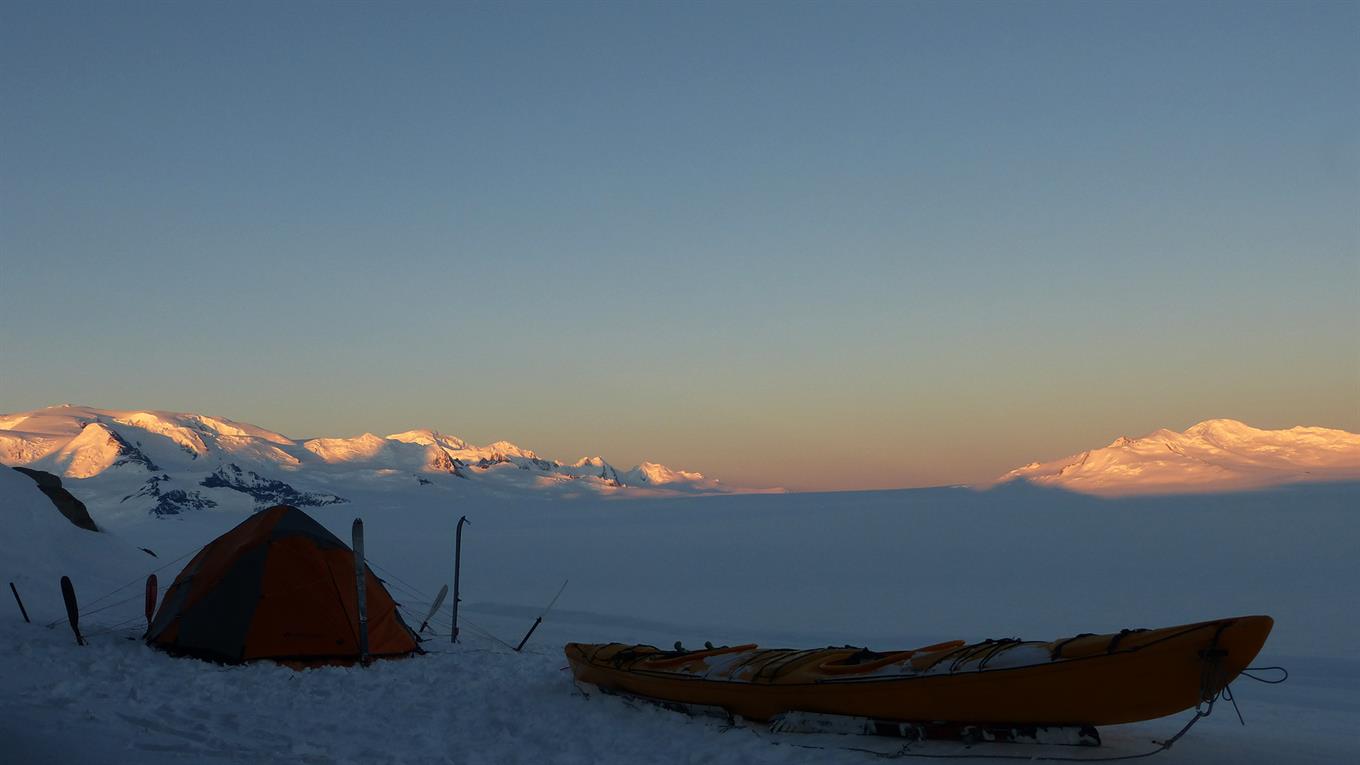
There was four ascents in total between the reconnaissance, the carrying of backpacks and equipment, and the kayak that, without supplies, weighted 4kg. They moved it with ropes and pulleys on a hostile rock and snow terrain, which took a week to get to the top, due to the steep slope that only allowed them to advance 300 meters per day. Once at the top, which was 1,700 meters high, they could see the sheer size of the glaciers and began the descent to flat terrain.
“They are 60 kilometers of glacier plateau, a little explored terrain and less in kayak”, emphasized Leonardo.
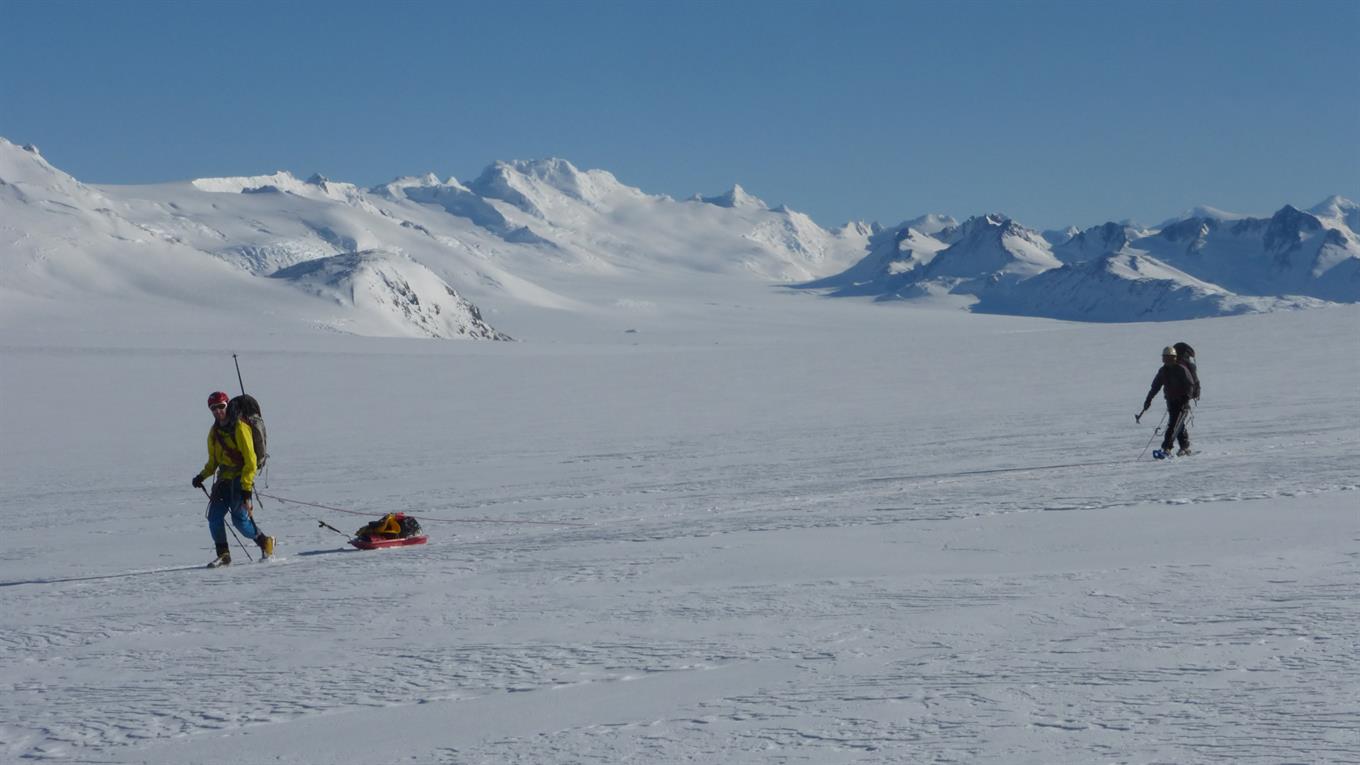
In that stretch, the Barilochenses put on their cross-country skis to glide across the ice while carrying the kayak with all the weight of the equipment. With an average of 8 hours of sunlight per day, sometimes they took advantage of the it and walked for more than 12 hours. Temperatures plummeted to 15 degrees below zero. The white wind stopped them for a day and a half, and they had to set up their camp right there, on the glacier, surrounding the tent with blocks of ice to stay warm and protect theirselves from the wind.
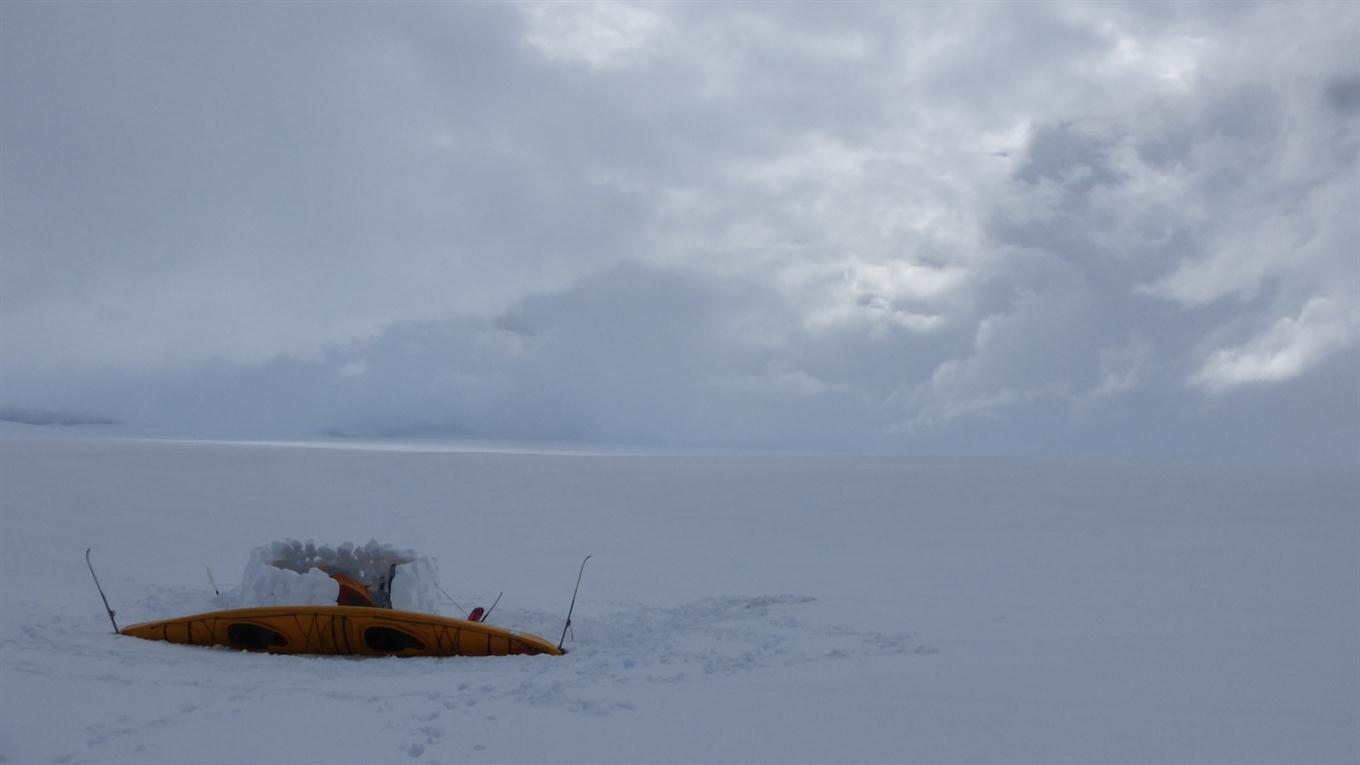
“In the middle of this itinerary, I saw behind a snow line, the summits of the Fitz Roy and Cerro Torre just peeping in. This was the first moment I felt I knew were I was. Worst possible scenario, we could drop everything and in one day we would be at the Gorra Blanca shelter”, he recalled. Fortunately, it was not necessary to abandon their journey.
In that place, they met someone for the first time since they had begun. A group of tourists and guides were on the traditional “Vuelta del Hielo” tour, which is done on the Chilean side, waking in the glaciers.
They continued with the difficulty of lowering the kayak to enter the Marconi Glacier, so they had to devise a rapel system to move it in the steep terrain. There were two pronounced sections of 60 meters cliffs before trekking to El Chalten by the Electrical Lagoon trail.
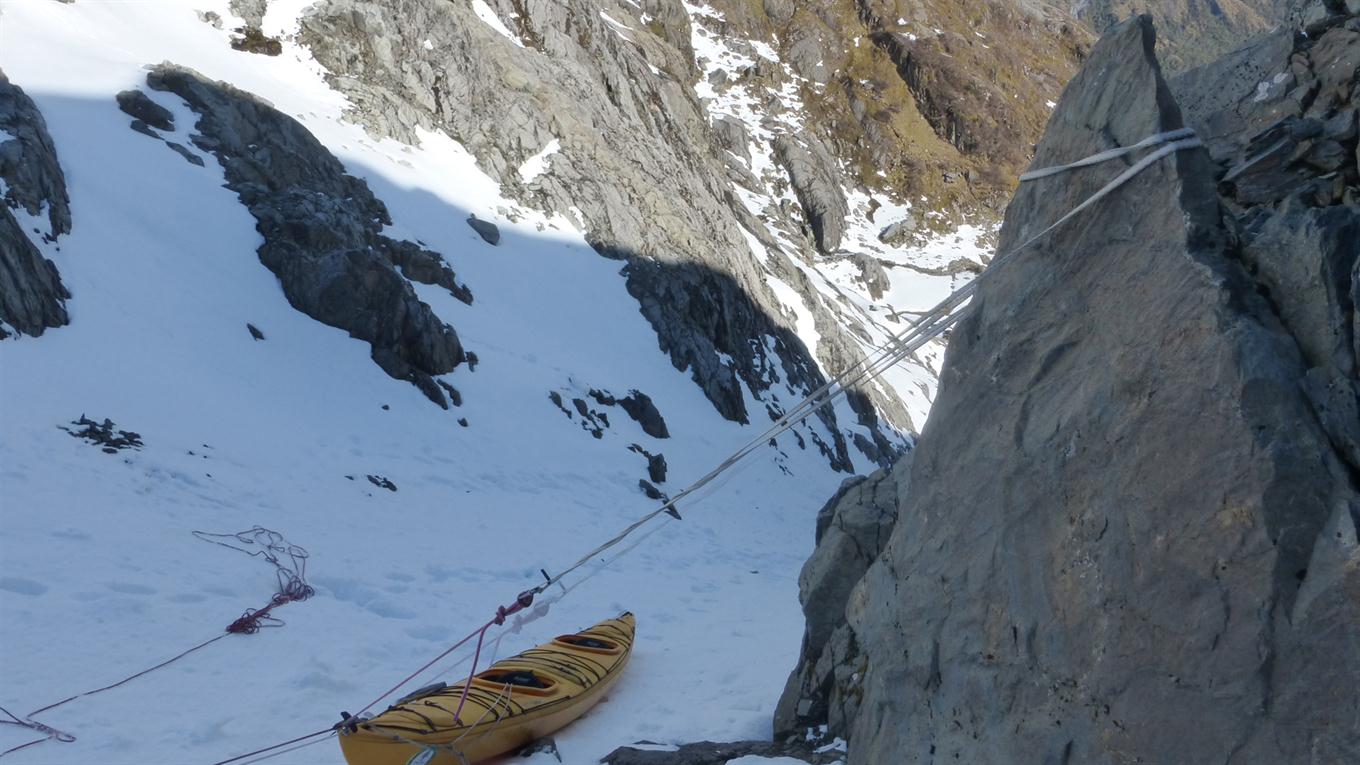
Resting in the town of Chaltén was an incentive. Especially because they found a childhood acquaintance that fed them at his restaurant. Leonardo and Roberto recharged their bodies and returned to the journey. The kayak was dragged along the Piedra del Fraile path to the river De las Vueltas, which was navigated with great care due to the lack of water flow.
THE FINAL PART
When they were aready close to the end, the kayak was launched in the waters of Lake Viedma from the Tunnel Bay, where they could only row 10 kilometers before the wind stopped them. They had to set up a new camp behind some trees. The second day was far more productive. They paddled for 75 km till the River La Leona, where they joined the Santa Cruz River, crossing across the province of the same name -with stops in abandoned “estancias”. Finally, they got to salt water once again. But this time, they were already in the Atlantic Ocean.
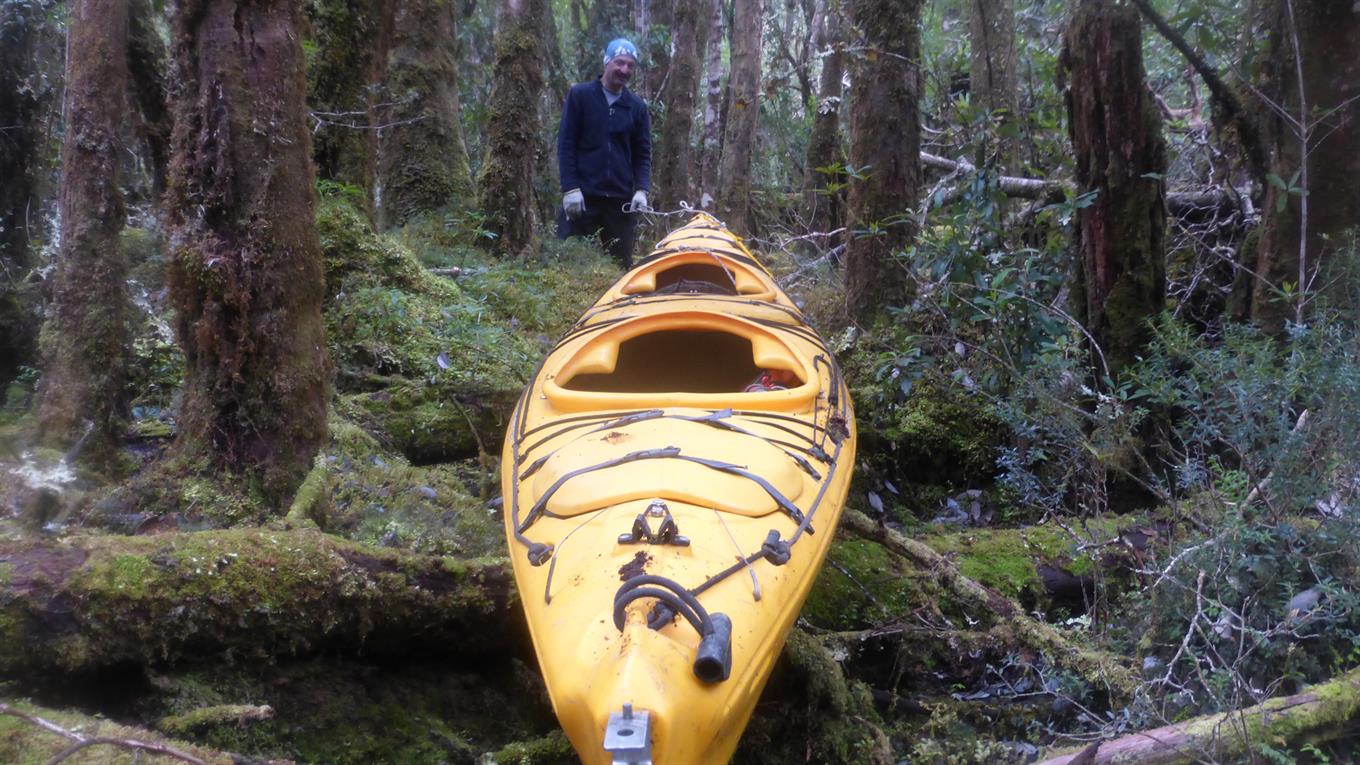
SOME NUMBERS
- The whole journey was 750 km long.
- 200 km were trekking.
- The trip lasted for 50 days.
- Highest elevation 1750 meters over the sea level.
- The kayak weighted 120 kg.